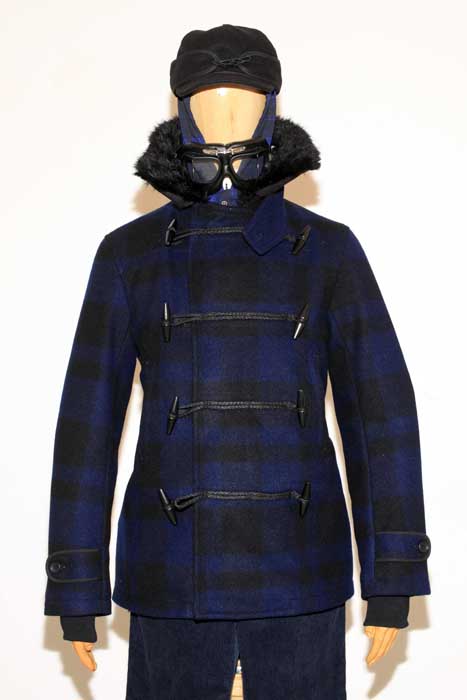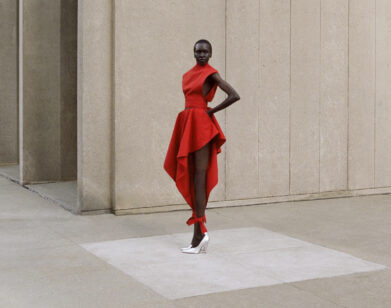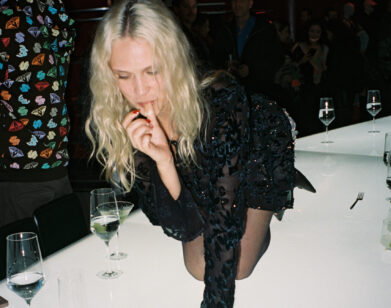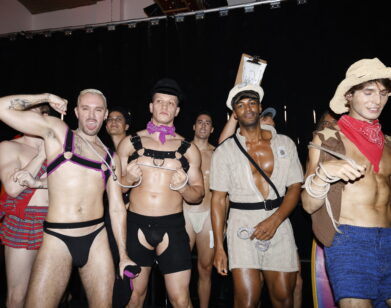Woolrich’s Hunting Noir

“Hunting noir” is the term designer Daiki Suzuki used to describe his second-to-last collection for American hunting-wear brand Woolrich Wooden Mills. In a palette of black and navy, the designer’s interpretations of the house’s classic Hudson Bay stripes, herringbones and plaids were just that. Revealed at last month’s Milano Moda Uomo, the collection, which featured a toggled peacoat and a sharply tailored blazer and trousers in wool denim, was inspired by the Comme des Garcons of the 1980s, and the brand’s own rustic-yet-dapper heritage. “I wanted to do something different,” said Suzuki. “I wanted to finish off my tenure at Woolrich by showing a different side of my view of what Woolrich is.”
Perhaps the designer’s best Woolrich collection to date, Suzuki’s sophisticated fall presentation was certainly something different. But it wasn’t just the refined woodsy clothes that set this show apart. Displayed at the Galleria Lorenzelli during an event called An Outdoor Concept, WWM’s Fall 2010 was showcased alongside the Zen-like silver gelatin prints of renowned Japanese photographer Masao Yamamoto. Soft and subtle, with the poignant flow of a Haiku, Yamamoto’s grey-scale landscapes of rolling mountains, windswept fields, and moonlight bouncing off gentle waves–all of which were pulled from his 2008 exhibition, KAWA=Flow–thrive off a dark simplicity. “I try to take time and speak to my viewers quietly, with as little information as possible,” says Yamamoto of his elegantly minimalist work. “I hope people can perceive something from the information as if in a hunt for treasure.”
It was WWM’s art director, Luca Caccioni, who was first inspired to present Dakai’s dark looks and Yamamoto’s serene images side by side. “I was really impressed by the focus on detail in Masao Yamamoto’s work,” he explains. “The details become the subject itself, together with the concepts of the time, the memory, the relationship between view and vision, nature and man. These concepts are also common in Daiki Suzuki’s creative vision, and I wanted these two similar identities to start a dialog, a poetry of silence, inside the art gallery.”
A humble Suzuki was more than pleased with this union of his fashion and Yamamoto’s art. “The photography was all in darker shades, but it was very graphic; done so subtly in a Zen way with so much restraint. I don’t think I am an artist but I want my work to be the same way.”






